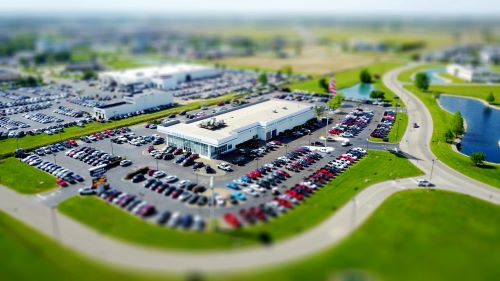
Publish Date
Mar 25, 2025
Australia Bulletin
The recent decision of the Federal Court of Australia in Toowoomba Regional Council v Commissioner of Taxation [2025] FCA 161[1] has challenged the Australian Taxation Office’s (ATO) interpretation of a “commercial parking station” under Section 39A of the Fringe Benefits Tax Assessment Act 1986 (FBTAA). This decision has the potential for significant implications when determining whether Fringe Benefits Tax (FBT) should apply to employee provided parking.
The case centered on whether the Grand Central Shopping Centre’s car parking facilities satisfied the definition of a “commercial parking station” for FBT purposes.
The Federal Court ruled in favour of the Council, highlighting that the fee structure and purpose of the car park in question distinguished it from a typical commercial carparking facility. Rather than operating primarily for profit from parking, the facility was designed to support the shopping centre by attracting customers.
This decision is contrary to the ATO’s current interpretation set out in Taxation Ruling (TR) 2021/2.[2] The decision concluded that a parking facility’s “commercial” status depends not only on whether a fee is charged but also on the broader operational purpose of the facility.

Historically, the ATO’s view as noted in TR 96/26[3] was that shopping centre car parks were specifically excluded from the definition of a “commercial parking station” and would therefore not give rise to an FBT liability. However, effective 1 April 2022, the ATO issued TR 2021/2, expanding the definition of commercial parking stations. The change in view was primarily due to the two Full Federal Court decisions in Virgin Blue Airlines Pty Ltd v. FCT [2010] FCAFC 137 and FCT v. Qantas Airways Ltd [2014] FCAFC 168. As a result of the cases, many shopping centres — which were previously exempt — were deemed to fall within the definition of a commercial parking station. Following the publication of TR 2021/2, many employers now pay FBT on the parking they provide to their employees.
The Toowoomba Regional Council sought a private ruling from the Commissioner of Taxation to clarify its FBT liability regarding car parking provided at the Grand Central Shopping Centre. The shopping centre’s parking structure offered:
In line with TR 2021/2, the Commissioner ruled that the Grand Central Shopping Centre parking facility was a commercial parking station. The Council objected and appealed to the Federal Court.
The Federal Court ruled in favour of the taxpayer, concluding that the Grand Central Shopping Centre’s parking facility was not a commercial parking station. The Court acknowledged that the term “commercial” has multiple meanings, including “engaged in commerce” and “capable of returning a profit.”
The ruling emphasised that within the statutory definition, “commercial” refers to a facility “intended to make a profit.” The Court also referred to the original Explanatory Memorandum to the Taxation Laws Amendment (Car Parking) Bill 1992,[4] which clarified that short-term shopper parking facilities using penalty rates for all-day parking were excluded from classification as commercial parking stations.
Furthermore, the Court found that the Grand Central car park was primarily operated to support the shopping centre’s business rather than as a standalone profit-making venture. The provision of free parking for the first three hours reinforced this conclusion.
At [43] Logan J noted:
These facts, in my view, make it obvious that the Grand Central car parking facility is being operated to a different end to a commercial carparking facility. It is obvious from the range of fees that it is being operated to the end of complementing the operation of the shopping centre. It is being operated to the end of being an attractive force that brings in business to the shopping centre, and more particularly its tenants. It is certainly, for those reasons, being operated in trade or commerce, but considered as a car parking facility alone, the range of free parking is inconsistent with it being operated commercially for profit, as opposed to commercially in the context of a shopping centre, not a standalone car parking facility.
In positive news for taxpayers, this decision challenges the interpretation previously adopted by the ATO in TR 2021/2 and potentially narrows the scope for FBT purposes. In addition to shopping centre car parks, other types of parking facilities that operate with penalty rates for all-day parking or that don’t have a standalone profit-making purpose, e.g., car parks operated by hospitals, universities or hotels, may also potentially fall outside the commercial car park net.
Notwithstanding, taxpayers should be cautious when considering the findings of this case to their circumstances. The Commissioner’s current view in relation to what constitutes a “commercial carparking facility” remains as set out in TR 2021/2.
It should also be noted that the Commissioner has filed a notice to appeal the above decision. We also understand that the ATO is planning to issue an interim decision impact statement. As such, businesses should exercise caution if they are relying on the Federal Court decision that may be impacted by subsequent decisions.
The Federal Court’s decision marks a potentially significant shift in how certain parking stations are assessed for FBT purposes. While it may provide relief to some employers, it also introduces uncertainty pending the appeal outcome, as well as the ATO’s future stance on similar cases. Businesses should review their car parking arrangements and remain informed on further developments arising from this ruling.
[1] Toowoomba Regional Council v. Commissioner of Taxation FCA 161, https://www.judgments.fedcourt.gov.au/judgments/Judgments/fca/single/2025/2025fca0161
[2] Australian Tax Office, TR 2021/2, “Fringe benefits tax: car parking benefits,” https://www.ato.gov.au/law/view/document?DocID=TXR/TR20212/NAT/ATO/00001
[3] Australian Tax Office, TR 96/26, “Fringe benefits tax: car parking fringe benefits,” https://www.ato.gov.au/law/view/document?docid=TXR/TR9626/NAT/ATO/00001&PiT=19961127000001
[4] Commonwealth of Australia, “Taxation Laws Amendment (Car Parking) Bill 1992 Explanatory Memorandum,” Effective date 1 July 1993, https://www7.austlii.edu.au/cgi-bin/viewdoc/au/legis/cth/bill_em/tlapb1992346/memo_1.html